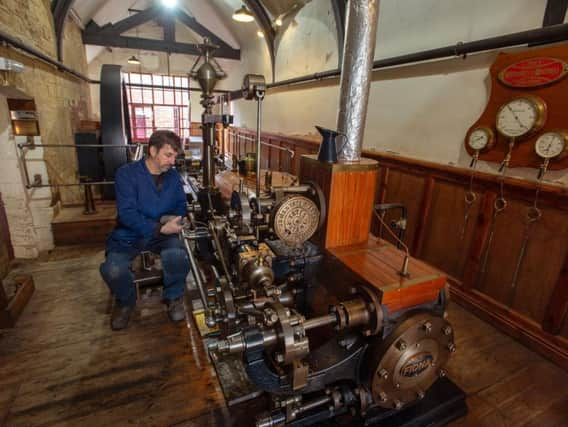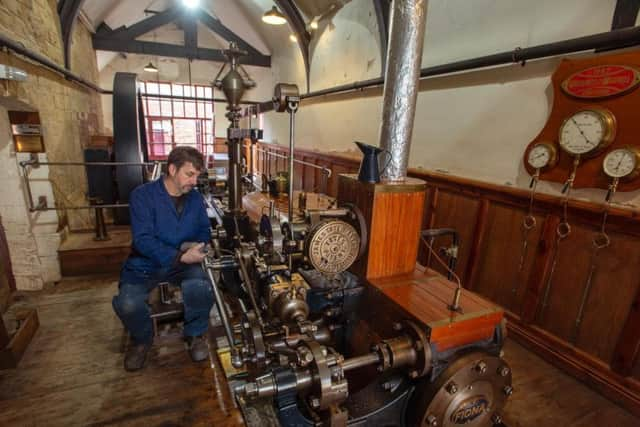Incredible pictures show Yorkshire's magnificent mill engine Fiona Elizabeth come out of retirement for one weekend only


Leeds Industrial Museum's incredible mill engine spent a lifetime toiling at the beating heart of the British industry before she retired for a well-earned rest, but this weekend she is back in action to celebrate National Mills Weekend.
The mesmerising machine will be in full working order today to give visitors a rare opportunity to watch the vintage engine in action and see first-hand how steam became the driving force behind the country's biggest and most powerful industries.
Advertisement
Hide AdAdvertisement
Hide AdThe engine takes its name from Fiona Lister, descendant of Steward Tempest, owner of Armley Mills in the early 1900s, and Elizabeth Tempest, daughter of the last owner of the mill, which today houses Leeds Industrial Museum.


Made by Woodhouse and Mitchell of Brighouse in around 1887, the engine is a typical example of the types of machines used to power many of Yorkshire’s smaller mills from the late 1800s.
After being employed in a flour mill in Kent and at a dye works in nearby Lower Wortley, at the end of her working life the engine fell into disrepair.
Thankfully, from 1980, a dedicated team of volunteers and museum staff spent around 4,700 hours restoring Fiona Elizabeth to working condition.
Advertisement
Hide AdAdvertisement
Hide AdJohn McGoldrick, Leeds Museums and Galleries’ curator of industrial history said: “The sights and sounds of a mill engine are unlike anything else and seeing one in action really does help us to imagine what it must have been like working in a building powered by one of these remarkable machines.